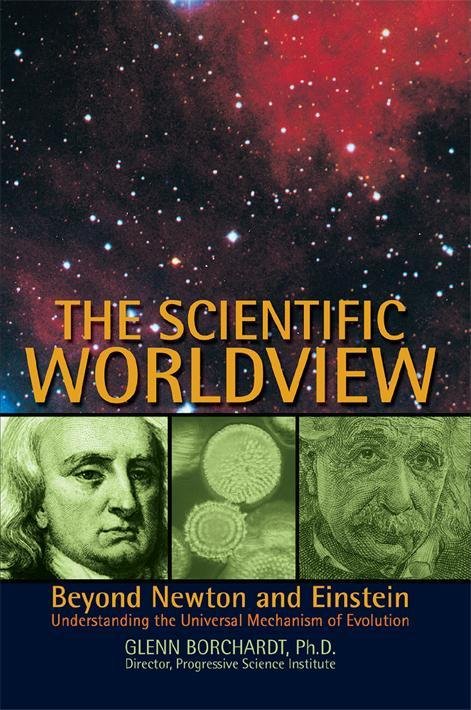PSI Blog 20220516 Front stage at the End-of-the-Universe trope
Regressive physicists and
cosmogonists invariably assume the Eighth Assumption of Religion, finity
(The universe is finite, both in the microcosmic and macrocosmic directions).
Without that critical assumption, the Big Bang Theory could not exist. Without the
propaganda provided by equally gullible media, the lay public would be spared such
illogical nonsense. Among the chief propagandizers is New Scientist, a
popular “science” magazine I have been following for over 4 decades. It has
some good stuff, but beware: You better use some good winnowing and sifting.
With
the invention of the Internet, the staff has become increasingly aggressive in
spreading the Word. Along with their more expensive “New Scientist Academy” the
latest is the “BIG THINKERS” lecture series designed to mislead us all down the
right path. The example below promotes Katie Mack as the heir-apparent to
deGrasse. I hope she replaces him on the Late Show. At least we would get someone
new to continue the old BBT BS.
Sorry
that this notice is a bit late—you missed your chance to become a “BIG THINKER.”
It is a shame for you to miss it if you still don’t believe the Sixth
Assumption of Science, complementarity (All things are
subject to divergence and convergence from other things). On the other hand, you
have not wasted your time and still have the $18.82 that was the cost of
admission.
Here is my latest screed on this subject stolen from a
chapter in “Infinite Universe Theory”:
“17.6 Will the universe
suffer “heat death”?
No. This is a logical offshoot of a misinterpretation of the
Second Law of Thermodynamics (SLT) by systems philosophers. The Sixth
Assumption of Science, complementarity resolves the
SLT-order paradox as I pointed out as early as 1984.[1] The
indeterministic assumption is just the opposite: Noncomplementarity. The Second Law of Thermodynamics states that
all isolated systems eventually run down. In the regressive interpretation,
constituent matter supposedly is converted into “energy,” which escapes the
isolated system as unusable heat. Another way of stating it from a mechanical
viewpoint is that the constituents of the system will diverge or expand into
its surroundings via their own momenta. Either way, both interpretations fit
the expanding universe of the Big Bang Theory with divergence being assumed
greater than convergence.
But, if you have been following my argument in favor of
univironmental determinism, you know that no systems are ideally isolated. If
they were, then the Second Law of Thermodynamics would not even work. The
system’s boundaries would have to be “leaky” or stretchable for the heat or
matter to escape its confines. Of course, if one treats the universe as a
finite, isolated 3-D system, one could argue it would expand into the perfectly
empty surroundings, that, for some reason, escaped the imagined creator’s
touch. On the other hand, if one treats the universe as a finite,
self-contained 4-D system with no surroundings as the Big Bangers do, one could
imagine its expansion without having to imagine its surroundings being empty.
In either case, one must use the indeterministic assumptions of finity and noncomplementarity and the deduction divergence could occur without
an equal amount of convergence.
There is a bit of truth to the correlation of expansion with
death. Except for the Infinite Universe, all microcosms come into being via
convergence and undergo death via divergence. The assumptions the universe had
a beginning and will have an ending are logically derived from our everyday observations
of everything in the universe. The only problem is that they cannot apply to
the universe as a whole.
I guess the heat death hysteria may be fading away as the
standard Big Bang Theory comes under attack and modifications are suggested to
handle some of its major contradictions. Cosmogonists are moving slowly toward
Infinite Universe Theory by suggesting oxymoronic solutions called “parallel
universes” or “multiverses,” while holding fast to the indeterministic
assumption of finity.
Each of those oxymoronic “universes” is based on the
expansion hypothesis, which, in turn, is based on Einstein’s Untired Light
Theory. These steps out of the cosmogonic box are admirable and perhaps one of
them could be the “super great attractor” responsible for the galactic flow
discovered by Kashlinsky and others.[2] It is true
that, in the future, Infinite Universe Theory always will be subject to change.
For instance, Stephen Puetz and I presented a hierarchical version in
“Universal Cycle Theory” in which the observed universe revolves around a
“Local Mega Vortex.” That is highly speculative, but we consider it superior to
the oxymoronic alternatives. Nonetheless, we stand by the
view the universe is eternal and extends infinitely in all directions.”[3]
[1]Borchardt, 1984, The scientific worldview. [Early manuscript version of the 2007 book. Also, an early version of the resolution was rejected by Science in 1980 and finally published as Borchardt, 2008, Resolution of the SLT-order paradox.]
[2]Kashlinsky and others, 2010, ibid.
[3]Borchardt, Glenn,
2017, Infinite Universe Theory: Berkeley, California, Progressive Science
Institute, 327 p. [http://go.glennborchardt.com/IUTebook].












No comments:
Post a Comment